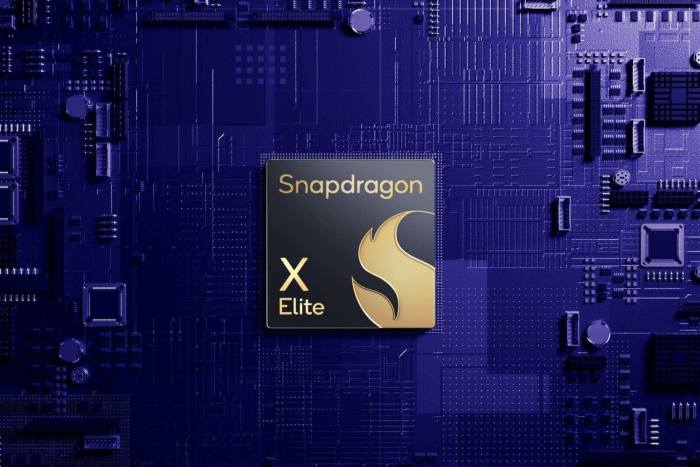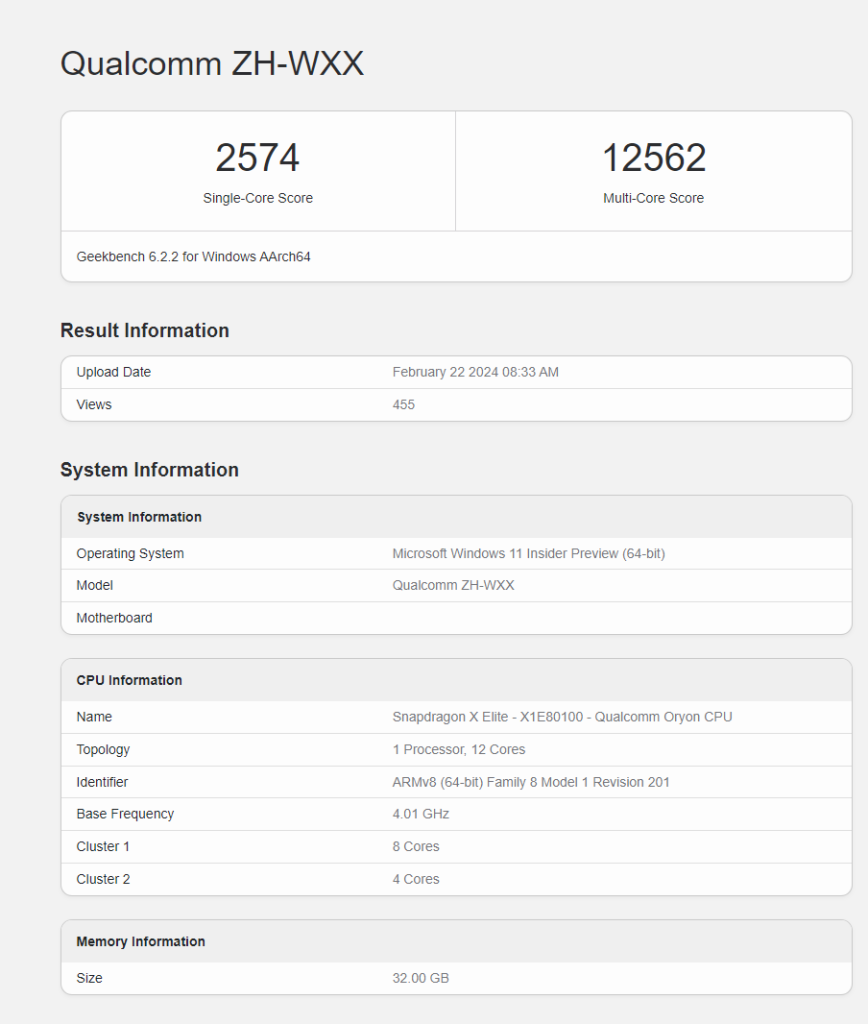Qualcomm processor Snapdragon X Elite – XE1800 is catching up with Apple M3
It might get released in mid 2024
3 min. read
Published on

A recent Geekbench listing for a prototype device featuring a Qualcomm processor named ZH-WXX, specifically the Snapdragon X Elite – XE1800, has demonstrated that it can be a worthy rival for Apple M3 in terms of performance.
In the benchmark results, the device has a new ARM chip and an impressive multi-core score of 12562, highlighting notable performance capabilities.
Qualcomm, a longstanding competitor to Apple’s M-series chips, has now joined hands with Microsoft on the development of Snapdragon X Elite, a processor specifically optimized for Windows 11.
During a teleconference, Qualcomm also hinted that the company is aiming to launch this processor in mid-2024, which is said to have advanced AI features.
And now, with these leaked benchmarks, it is safe to say that the claim is true. The predecessors of Snapdragon ARM chips failed to level with the Apple M-series; however, the XE1800 exhibits a significant leap and has outperformed M1 and M2 chips and might outmatch the performance level of M3 in an optimized environment.
This snapshot of the Geekbench test reveals that the Snapdragon X Elite is a powerful processor with a single-core score of 2,574. This metric measures the processor’s performance while executing tasks, stressing its capability to deal with single-threaded applications.
However, on the multi-core front, Snapdragon X Elite reached a score of 12562, which shows substantial improvement as compared to its previous iterations. This metric reflects the collective performance of all CPU cores when dealing with multi-threaded tasks, which is crucial for workloads that can be parallelized across multiple threads.
The benchmark also indicates that Snapdragon X Elite – XE1800 has 12 cores, one cluster with eight cores and the second one with four cores. This architecture follows the big.LITTLE design, optimizing some cores for performance and others for efficiency.
The test was run five times; the highest score for single core was 2574, and multi-core was 12562. Let’s check out all the results:
| Test | Single-Core Score | Multi-Core Score |
| 1 | 2574 | 12562 |
| 2 | 2565 | 11778 |
| 3 | 2517 | 11010 |
| 4 | 2548 | 11253 |
| 5 | 2434 | 2434 |
When compared with the Apple M series chip, the Snapdragon X Elite was found to be superior in multi-core performance to the previous Apple M gen chips, which is a big advancement in terms of processor technology. Here are the results:
| Chip | Single-core Score | Multi-core Score |
| Apple M1 | 2334 | 8316 |
| Apple M2 | 2589 | 9742 |
| Apple M3 | 3181 | 15620 |
| Snapdragon X Elite | 2574 | 12562 |
However, the Apple M3 is still ahead of Snapdragon X Elite in both single-core and multi-core performance. Both the chips have 12 cores. The Apple M3 chip works at a higher speed (4.05 GHz) than the Snapdragon X Elite, whose current speed is not specified.
But one other thing that should be noticed is that this Snapdragon processor was tested on a device running on a Windows 11 preview build. This suggests that the processor could potentially yield even better results on a stable version of the operating system.
The overall test results show promising results, which means a device with this processor and running on Windows 11 can be expected to have improved performance.
What do you think about Qualcomm’s processor’s significant leap? Share your thoughts in the comments section below.











User forum
0 messages